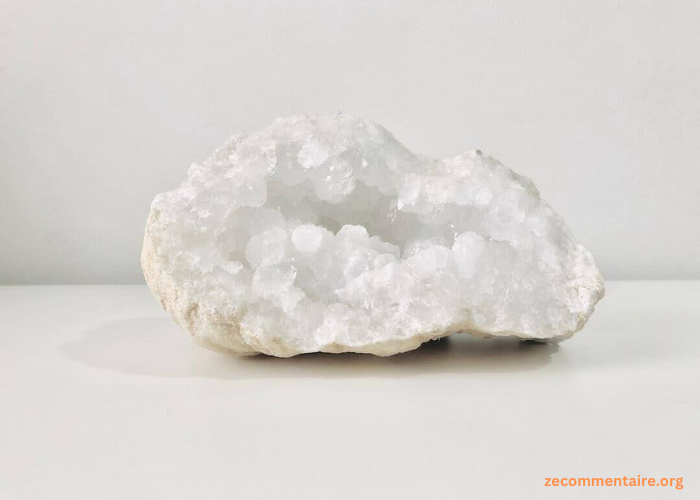The devastating effects of drug addiction have taken a toll on individuals, families, and communities around the world. And two of the most commonly abused drugs that have contributed to this epidemic are crack and crystal meth. While they may seem similar at first glance, these two substances have distinct characteristics.
It also has vastly different impacts on the brain and body. Understanding the differences between these drugs is crucial in effective treatment and recovery. In this blog post, we will delve into the contrasting features of crack vs crystal meth addiction.
It sheds light on their distinct effects, addictive properties, and treatment approaches. Read on.
What are Crack Cocaine and Crystal Methamphetamine?
Crack cocaine and crystal methamphetamine are two highly addictive drugs that can have devastating effects on an individual and their loved ones. Both drugs are stimulants, meaning they increase levels of dopamine in the brain.
This leads to intense feelings of pleasure and increased energy. Here’s a deeper dive into addiction differences between these two.
Crack Cocaine
Derived from powdered cocaine, crack is a freebase form of cocaine that can be smoked. It’s called “crack” because of the crackling sound it makes when heated. Crack delivers a short, intense high to the user, making it extremely addictive.
Its effects are felt almost immediately but are short-lived. This often prompts repeated use to maintain the high and avoid withdrawal symptoms.
Crystal Methamphetamine
Commonly known simply as crystal meth, this is a form of methamphetamine that resembles glass fragments or shiny blue-white rocks. Unlike crack, which is often used episodically, crystal meth’s effects last significantly longer, sometimes up to 12 hours. Also, this drug can be:
- smoked
- snorted
- injected
- taken orally
Crystal meth use leads to an intense feeling of euphoria. However, it comes with severe physical and psychological consequences over time.
The Differences in Addiction
While they may share some similarities, there are distinct differences in their addiction and treatment. Here’s a difference between its effects.
Crack Cocaine
Primarily increases dopamine levels in the brain. This leads to intense feelings of:
- euphoria
- increased energy
- alertness
However, the high is fleeting, leading users to consume more of the substance to chase the initial euphoria. This often results in a cycle of binge use. The rapid onset and short duration of highs can exacerbate the compulsive pursuit of the drug, significantly increasing the risk of addiction.
Crystal Meth
It affects the central nervous system more broadly. It produces not only increased dopamine but also norepinephrine and serotonin levels. This leads to prolonged periods of:
- wakefulness
- decreased appetite
- a heightened sense of well-being or confidence
Given its longer-lasting effects, crystal meth users may go on multi-day binges that severely deplete the body’s resources. This is followed by long periods of sleep and recovery.
Withdrawal and Long-term Effects
Both substances lead to severe short-term and long-term health issues, but the nature of these effects can vary. Crack can cause:
- respiratory issues
- cardiovascular problems
- severe dental decay
Long-term use of crystal meth also results in significant:
- dental problems (often called “meth mouth”)
- severe weight loss
- skin sores
However, its neurotoxic effects can lead to profound cognitive and emotional problems that may be more permanent than those associated with crack cocaine. This is why creating robust recovery strategies is essential.
Approaches to Treatment and Recovery
Substance abuse treatment to crack cocaine and crystal methamphetamine shares many common strategies. However, it must also address the unique aspects of each substance’s effects. Here are the top drug treatment options.
Detoxification
The first step in treating any substance addiction is typically detoxification. It’s a medically supervised process of letting the body clear itself of drugs while managing withdrawal symptoms.
The severity and duration of the detox process can vary significantly between crack and crystal meth. This is due to their different effects on the body’s neurochemistry and the pattern of use typical for each drug.
Behavioral Therapies
Choosing addiction therapy can be daunting. Both types of addiction commonly involve behavioral therapies that aim to modify the patient’s:
- thinking
- expectations
- behaviors
This is while increasing skills to cope with various life stressors. Cognitive-behavioral therapy (CBT) and contingency management interventions are among the most effective treatments for both crack and crystal meth addiction.
Medication
There are currently no FDA-approved medications to treat crack cocaine addiction. This makes psychosocial support essential.
For crystal meth addiction, there are also no specific medications for its treatment. However, there are certain antidepressants and medications used to treat ADHD have been used off-label to help manage withdrawal symptoms and cravings.
Supportive Care and Rehabilitation
Long-term care plays a critical role in recovery from both crack and crystal meth addiction. This includes:
- rehabilitation programs
- support groups
These services provide the necessary support structures to help recovered individuals:
- rebuild their lives
- find employment
- establish supportive social networks
They also provide information about the most addictive drug and how to avoid them. It’s known that addiction recovery support is very important to the recovery process.
Holistic and Alternative Therapies
holistic and alternative therapies are becoming increasingly recognized for their potential to support recovery from substance addiction. Approaches such as:
- art therapy
- music therapy
- mindfulness-based interventions
Which can provide valuable outlets for expression and self-reflection. This helps individuals to process emotions and stress in a non-verbal and creative manner.
However, these treatments are not meant to replace traditional methods. It is rather than combined.
Challenges in Treatment
One of the most significant challenges in treating crack and crystal meth addiction is the high potential for relapse. The intense cravings, particularly in the early stages of recovery. Also the potential for lasting neurological impacts.
It makes some components critical of an effective treatment plan. These are such as:
- support
- monitoring
- ongoing therapy
The social and environmental factors that often accompany addiction must be addressed. These are such as:
- poverty
- unemployment
- crime
This is to give individuals the best chance at a successful recovery. Holistic treatment approaches that include social services can offer pathways out of the cycle of addiction and support sustained recovery.
Know the Difference Between Crack Vs Crystal Meth Today
In conclusion, understanding the differences between crack vs crystal meth addiction is crucial in providing effective treatment strategies. Both drugs may lead to detrimental effects on one’s physical and mental health. However, with the right treatment approach, recovery is possible.
If you or a loved one is struggling with addiction, do not hesitate to seek help and take the first step towards a healthier future. Remember, recovery is possible. Talk to an expert today!
If you want to read more articles, visit our blog.





